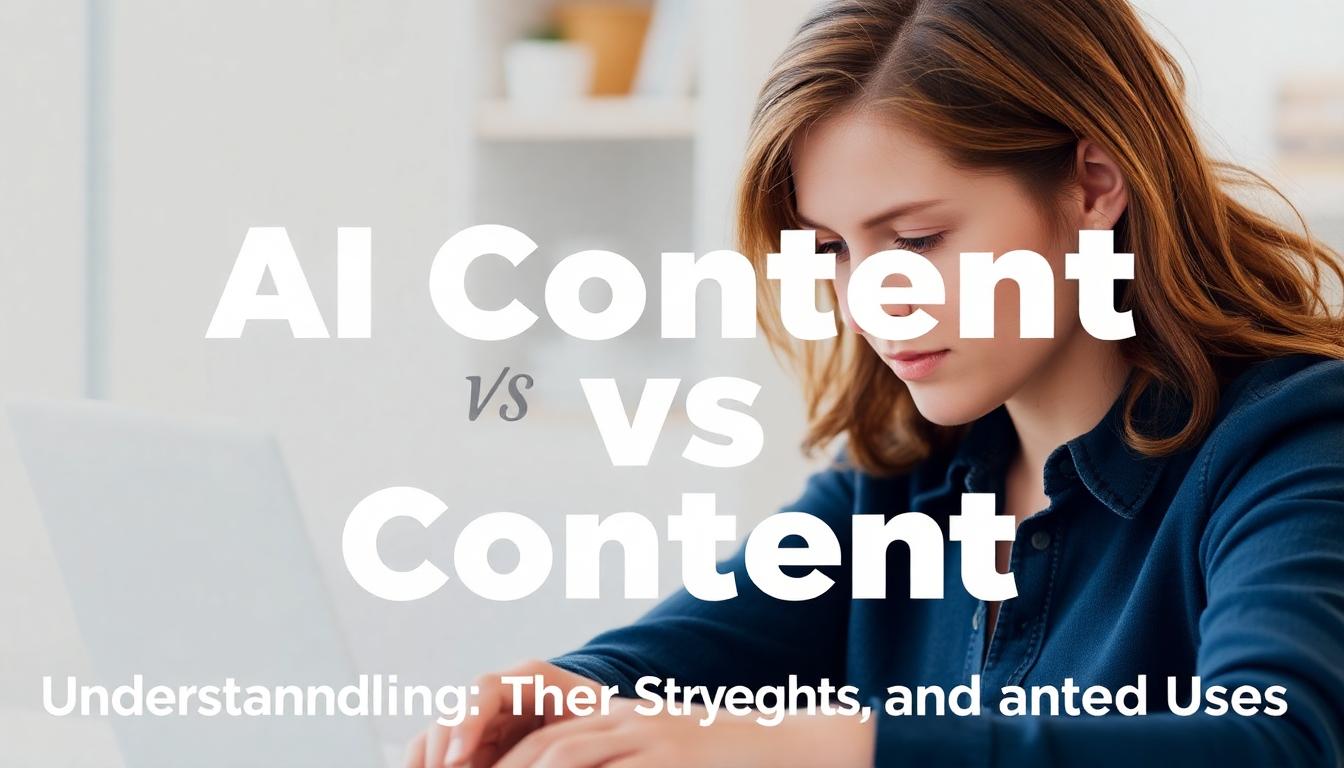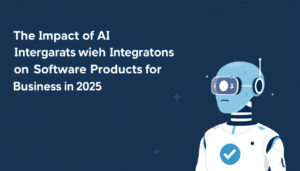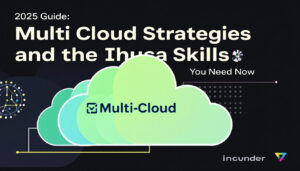The use of artificial intelligence in content creation has increased significantly in recent years, raising questions about how AI-generated content compares with content crafted by humans. Understanding the differences between these two approaches is essential for developing an effective content strategy. This post will outline key distinctions, strengths, and practical applications for both AI and human content, guiding readers on when each is most appropriate. Clear insight into this topic supports better decision making in content production.
Defining AI-Generated Content and Human-Written Content
When comparing AI-generated content with human-written content, it is important to first understand the foundational processes and qualities behind each. Both serve distinct roles and rely on different capabilities, shaping the way content is produced and consumed today.
How AI Content is Created
AI-generated content results from complex algorithms designed to simulate human language. At the core of this process are technologies known as natural language processing (NLP) and machine learning models. NLP allows AI to interpret and generate human language by analyzing text, understanding syntax, and predicting logical word sequences. Machine learning underpins this by training on vast amounts of data to recognize patterns and generate relevant text.
Popular AI writing tools, for example, draw from extensive datasets to produce articles, summaries, or reports automatically. These systems analyze input prompts and then assemble coherent sentences based on learned statistical probabilities. The workflow includes:
- Data ingestion: Feeding large textual datasets into the model.
- Pattern recognition: The model identifies common linguistic structures.
- Content generation: Produces text based on the analyzed data and the given prompt.
- Refinement: Some tools include feedback loops to improve accuracy and relevance.
This approach enables efficient and scalable content production, often producing drafts or outlines in seconds. However, it depends heavily on the quality of input data and predefined algorithms, lacking personal experience or insight. For a detailed understanding of AI’s role in content creation, resources like the analysis on AI in content creation provide useful context.

Photo by Shantanu Kumar
Characteristics of Human-Produced Content
Content created by humans benefits from intrinsic qualities that remain beyond the full reach of current AI technology. Human writers apply creativity, emotional intelligence, and contextual understanding to their work. These apply in several ways:
- Creativity: Humans construct original ideas and express unique perspectives that go beyond pattern recognition. This includes subtle humor, irony, and cultural references that enrich content.
- Emotional intelligence: Writers can infuse their language with empathy or sentiment relevant to the audience’s emotional state, tailoring tone accordingly.
- Contextual understanding: Unlike AI, humans interpret situations, historical background, and social nuances, which guide more accurate and meaningful communication.
These attributes enable human content to connect deeply with readers, offering nuanced storytelling and a personalized voice. This is explained further in discussions such as AI vs. Human creativity, underscoring where human content excels through its layered depth and emotional resonance.
Both AI and human content have distinct advantages, and recognizing their nature helps in applying them effectively within content strategies. For more on optimizing content efforts, explore practical content insights.
Comparing Quality and Creativity Between AI and Human Content
When evaluating AI-generated content against human-written content, it is essential to consider how each performs in terms of quality, consistency, creativity, and emotional resonance. Both approaches deliver distinct advantages shaped by their inherent capabilities. AI excels in producing precise, volume-driven material, while human authors bring originality and depth that elevate the reading experience beyond mere information delivery.
Advantages of AI Content in Quality and Consistency
AI content stands out for its ability to generate large volumes of accurate and consistent text rapidly. This strength is rooted in AI’s design to process extensive data sets and apply learned linguistic patterns without fatigue or distraction.
- Speed and efficiency: AI can produce tons of content in minimal time, ideal for meeting tight deadlines or handling routine, data-driven tasks.
- Uniformity: Unlike humans, AI maintains a stable tone, style, and formatting throughout, reducing risks of errors caused by lapses in concentration.
- Data accuracy: When tasked with fact-based or numerical writing such as summaries, reports, and product descriptions, AI pulls from vast databases to enhance factual consistency.
- Scalability: The ease of scaling up content production without compromising uniformity is invaluable for businesses aiming to expand reach quickly.
Despite advantages, AI-generated content may lack the nuance that often distinguishes exceptional writing, potentially resulting in text that feels mechanical or formulaic. However, for tasks prioritizing volume and factual accuracy, AI remains unmatched. For further insights on this balance, resources like TraceGPT’s overview of AI vs. human content offer detailed comparisons.
Strengths of Human Content in Creativity and Emotional Depth
Human content continues to lead in areas demanding creativity, unique storytelling, and emotional connection. These qualities emerge from the writer’s personal experience and intuitive grasp of language subtleties.
- Originality: Humans generate new ideas, metaphors, and expressions that do not rely on pre-existing data patterns.
- Emotional nuance: Writers can modulate tone to resonate with readers’ feelings, invoking empathy or inspiration as appropriate.
- Contextual awareness: Humans naturally incorporate cultural, historical, and social contexts, producing content that feels relevant and thoughtful.
- Storytelling: Narrative flow and a distinctive voice engage readers, transforming information into memorable experiences.
These factors contribute to richer, more compelling content that builds trust and fosters long-term audience engagement. The human touch often proves indispensable in creative marketing, opinion pieces, or any format demanding subtlety beyond straightforward data delivery.

Photo by Darlene Alderson
For businesses exploring effective content strategies, understanding these distinctions guides optimum resource allocation. Balancing AI’s efficiency with human creativity delivers both quality and impact, catering to various audience demands. To learn more about why quality in content matters, you can visit this detailed guide on content quality.
Use Cases Best Suited for AI Content vs Human Content
Knowing when to use AI-generated content versus human-written content is key to achieving the best results. Each has strengths that fit different types of communication needs. Understanding these can help you decide which approach to adopt for specific content projects.
Ideal Scenarios for AI Content
AI content is particularly well suited for tasks that demand speed, volume, and consistency without sacrificing accuracy. It excels where the content is formulaic, data-heavy, or repetitive. Examples include:
- Data-Driven Reports: Financial summaries, quarterly performance updates, or research overviews benefit from AI’s ability to quickly process numerical data and factual input.
- Product Descriptions: Ecommerce sites often require hundreds or thousands of product descriptions that need to be clear, uniform, but not necessarily deeply personalized.
- Routine Content: News bulletins, weather forecasts, and technical manuals are areas where AI can provide timely and reliable updates with minimal human intervention.
- SEO-Focused Content: AI can generate optimized meta descriptions, keyword-rich blogs, and structured content that targets search engine algorithms effectively.
Using AI for such content frees up human resources to focus on areas where creativity and insight are more essential. This Google Cloud article on generative AI use cases illustrates how industries leverage AI to automate repetitive documentation and reporting tasks, boosting efficiency without compromising precision.
Situations When Human Content is Crucial
Human content shines in contexts that demand emotional nuance, cultural awareness, and original storytelling. These include:
- Brand Storytelling: Crafting a brand narrative requires vision and personality—elements that rely on human creativity and authentic voice to engage audiences deeply.
- Opinion Pieces and Editorials: Nuanced arguments and subjective interpretations call for human judgment, values, and critical thinking. AI can assist but cannot replace thoughtful analysis.
- Content Requiring Empathy: Articles about sensitive topics such as mental health, social issues, or customer service must connect emotionally. Humans understand context, tone, and compassion far better than AI.
- Culturally Sensitive Materials: Localization and contextual adaptation reflect cultural norms, humor, and idioms that AI lacks the full capacity to grasp or reproduce accurately.
In these cases, human writers ensure content is meaningful, credible, and aligned with audience expectations. Effective communication here goes beyond data—it requires insight, empathy, and refined understanding.
This distinction is critical in managing content strategies. By combining AI’s strengths in scalability with human creativity, organizations can maintain both quality and efficiency. For a deeper look into balancing these approaches, you may consider strategies highlighted in the HUIT Harvard overview on AI use cases.

Photo by Pavel Danilyuk
Ethical Considerations and Challenges with AI Content
As AI-generated content becomes more prevalent, it raises important ethical questions and operational challenges. From the risk of false information to concerns about employment, these issues require careful consideration. Understanding these ethical factors is necessary to balance the benefits of AI with responsible and fair practices in content creation.
Addressing Accuracy and Misinformation Concerns
AI systems generate content by analyzing vast data sets and predicting likely word sequences. While this allows for the rapid production of text, it also introduces risks of inaccuracies and biased outputs. AI can inadvertently produce false statements, misrepresent facts, or repeat prejudices found in its training data.
Several key concerns arise from this:
- Misinformation: AI may create convincing but factually incorrect or misleading content. When unchecked, this intensifies the spread of “fake news” and misinforms readers.
- Bias: AI models can echo social, cultural, or political biases embedded in their training sources, resulting in unfair or harmful portrayals.
- Hallucinations: At times, AI generates entirely fabricated details that seem plausible but have no basis in reality.
Mitigating these risks requires proactive strategies:
- Verification protocols: Human editors should review AI-produced content for accuracy, checking facts and sources thoroughly.
- Clear disclosure: Indicating when content is AI-generated helps readers critically assess its reliability.
- Model training updates: Continuously refining training data to remove biased or outdated information reduces inherent prejudices.
- Cross-checking facts: Employing multiple trusted data sources ensures greater content validity.
Efforts to address these issues are ongoing within the AI development community. For instance, techniques to reduce “hallucinations” and bias in AI models are being actively researched to improve content quality and trustworthiness (MIT Sloan on AI hallucinations and bias). Furthermore, awareness of how AI can facilitate misinformation boosts vigilance in content management (Virginia Tech experts discuss AI and fake news).
Impact on Employment and the Future of Content Creation
The rise of AI content generators influences the roles and livelihoods of human content creators. While AI can automate repetitive or data-heavy writing tasks, human involvement remains critical for quality, creativity, and meaningful communication.
The implications for employment include:
- Job displacement: Certain entry-level or routine writing jobs are at risk of being replaced by AI, reducing demand for those tasks.
- Role evolution: Content creators increasingly collaborate with AI tools, focusing on higher-level editing, creative direction, and strategy.
- New skillsets: Writers must adapt by learning to integrate AI effectively, emphasizing skills AI cannot replicate, such as emotional insight and storytelling.
- Economic shifts: Industries relying heavily on content production may see workforce restructures and a need for ongoing training.
Balancing these changes requires thoughtful management to support workers and harness AI’s capabilities productively. Human creativity paired with AI efficiency presents an opportunity—not a replacement—to elevate content quality and innovation.
Recognizing these challenges, ethical AI use calls for transparency about automation’s impact and commitment to workforce development (Harvard Business School’s ethical considerations of AI). Additionally, the potential effects of AI on employment highlight the need for companies to plan carefully how AI is introduced and how roles may transform (Service Desk Institute on AI in the workplace).

Photo by Andrew Neel
For further discussion on balancing automation with human creativity and quality, explore these insights on AI content use, which examine how to integrate both approaches effectively.
Integrating AI and Human Content for Optimal Results
Combining AI-generated content with human writing unlocks a powerful approach that balances efficiency with creativity. Instead of viewing AI and human content as competing forces, the most effective strategies treat AI as an assistant that enhances human capabilities. This approach allows content teams to produce quality work at scale while preserving the nuance and insight that only people can provide.
Best Practices for Using AI as a Content Assistant
Using AI effectively means positioning it as a tool to support human writers, not replace them. Here are several key guidelines to ensure AI complements human creativity and judgment:
- Start with AI-generated drafts: Allow AI to create first drafts or outlines for routine or data-heavy content. This saves time and provides a solid structure for human refinement.
- Prioritize human editing: Always have human writers or editors review AI-created content for style, tone, accuracy, and relevance. Editing helps maintain voice consistency and corrects any factual errors or AI hallucinations.
- Use AI for research and fact-checking: AI excels at gathering data and summarizing information but can introduce inaccuracies. Cross-verify facts with trusted sources before publication.
- Define clear roles: Assign repetitive, formulaic, or keyword-driven tasks to AI, while reserving storytelling, opinion pieces, and emotionally sensitive topics for humans.
- Maintain transparency: Inform audiences when AI has contributed to content creation to build trust and encourage critical evaluation.
- Integrate feedback loops: Use human feedback to refine AI output continually, improving content quality over time.
By applying these practices, teams capitalize on AI’s speed and scale while safeguarding against the limitations AI currently faces, such as lack of context or emotional depth.
Case Studies and Examples of Successful Integration
Several companies have effectively blended AI tools with human writers to enhance content strategies. Notable examples include:
- Skyword’s marketing approach: Skyword integrates AI-driven analytics to identify content gaps and trends swiftly. Human writers then craft the final pieces, bringing creativity and strategic insight. This combo drives both efficiency and rich engagement, as illustrated in their overview of AI and human collaboration.
- Muldrow Marketing’s content creation: They employ AI to handle keyword optimization, metadata, and SEO-driven content drafts, while human writers customize messaging to resonate with target audiences. This method balances AI’s ability to process data with human authenticity, detailed further in their examination of balancing AI efficiency with human authenticity.
- E-commerce platforms: Many retail sites use AI to generate product descriptions en masse, but rely on human editors to tweak language so it aligns with the brand voice and customer expectations.
These cases demonstrate that integrating AI and human content is not about compromise but about maximizing the strengths of both. Human oversight ensures precision and emotive power, while AI handles volume and initial generation.

Photo by Anna Shvets
For businesses looking to optimize content output, a deeper understanding of when and how to combine AI and human efforts is available in effective content strategy resources such as why content quality matters.
Conclusion
AI-generated and human-written content each offer distinct benefits that serve different purposes in content creation. AI excels in speed, consistency, and handling large-scale, data-driven tasks, making it efficient for routine or SEO-focused work. Human content provides creativity, emotional insight, and contextual understanding, which are essential for building trust and engaging readers on a deeper level.
A balanced approach that combines AI’s efficiency with human oversight and creativity produces the best results. This hybrid model ensures content maintains quality while benefiting from scalable production.
Effective strategies incorporate human review and editing of AI drafts to preserve accuracy and voice. Organizations that embrace this collaboration position themselves to meet diverse content needs while maintaining editorial standards.
For more on optimizing content efforts, refer to the detailed discussions on content quality.









